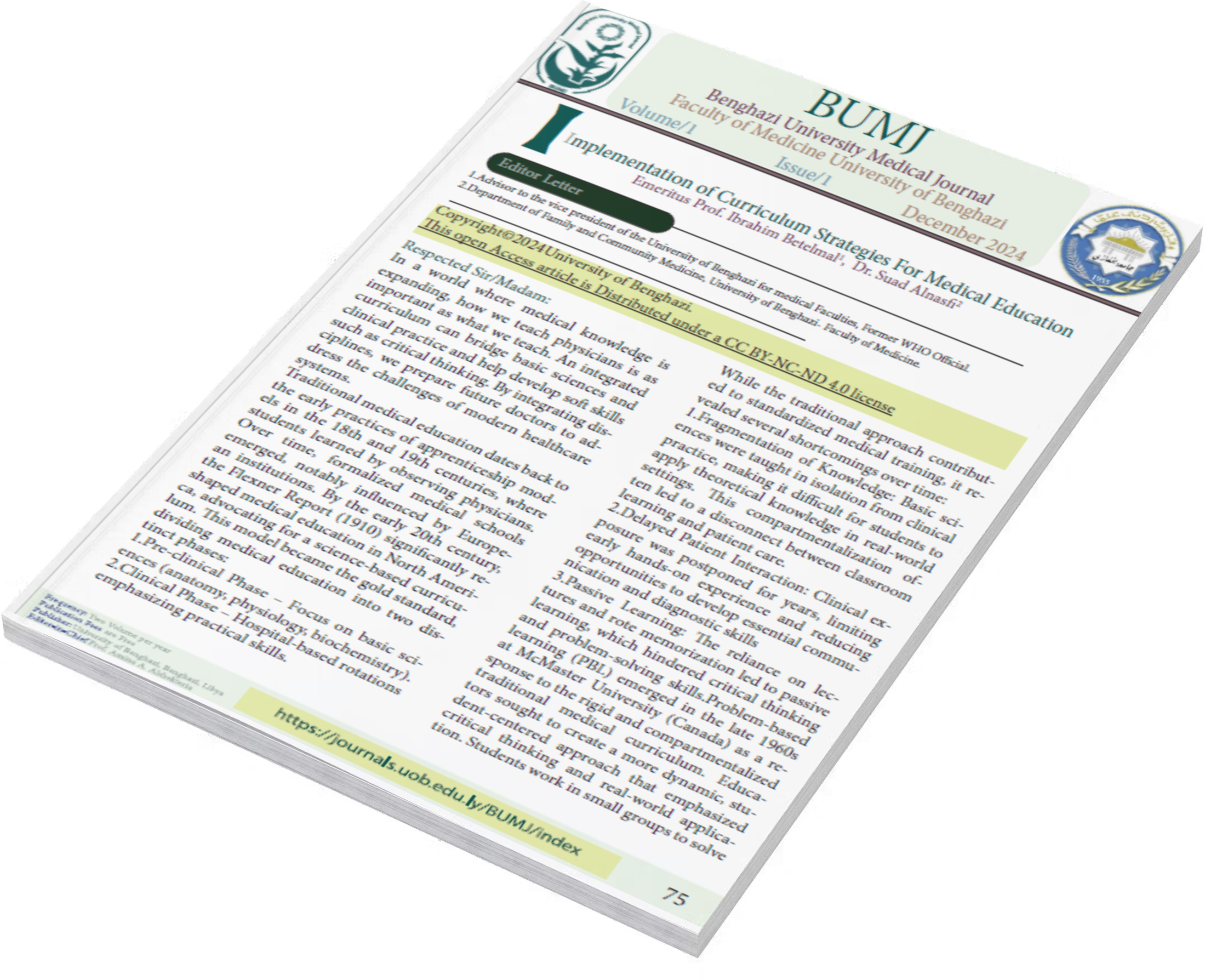Implementation of Curriculum Strategies For Medical Education
DOI:
https://doi.org/10.37376/benunivmedj.v1i1.7143Abstract
In a world where medical knowledge is expanding, how we teach physicians is as important as what we teach. An integrated curriculum can bridge basic sciences and clinical practice and help develop soft skills such as critical thinking. By integrating disciplines, we prepare future doctors to address the challenges of modern healthcare systems.
References
-Bridges, S. M., Yiu, C. K. Y., & Botelho, M. G. (2011). Educational Strategies in Problem-Based Learning. Medical Teacher, 33(4), 320-328.
- Cannon, R., & Newble, D. (2000). A Handbook for Teachers in Universities and Colleges: A Guide to Improving Teaching Methods. Routledge.
- Cooke, M., Irby, D. M., & O’Brien, B. C. (2010). Educating Physicians: A Call for Reform of Medical School and Residency. Jossey-Bass.
-Gibbs, G. (2010). Dimensions of Quality. Higher Education Academy.
-Harden, R. M. (2000). The Integration Ladder: A Tool for Curriculum Planning and Evaluation. Medical Education, 34(7), 551-557.
-Neville, A. J., Norman, G. R., & Whitehead, C. R. (2011). The Status of PBL Research: Where Are We Now?. Medical Education, 45(9), 912-922.
-Prince, M. (2004). Does Active Learning Work? A Review of the Research. Journal of Engineering Education, 93(3), 223-231.
-Schmidt, H. G. (1998). Problem-Based Learning: Does It Prepare Medical Students to Become Better Doctors?. Medical Journal of Australia, 168(9), 429-432.

Downloads
Published
How to Cite
Issue
Section
License
Copyright (c) 2024 Benghazi University Medical Journal

This work is licensed under a Creative Commons Attribution-NonCommercial-NoDerivatives 4.0 International License.
Copyright©2024University of Benghazi.
This open Access article is Distributed under a CC BY-NC-ND 4.0 license








 Copyright
Copyright


